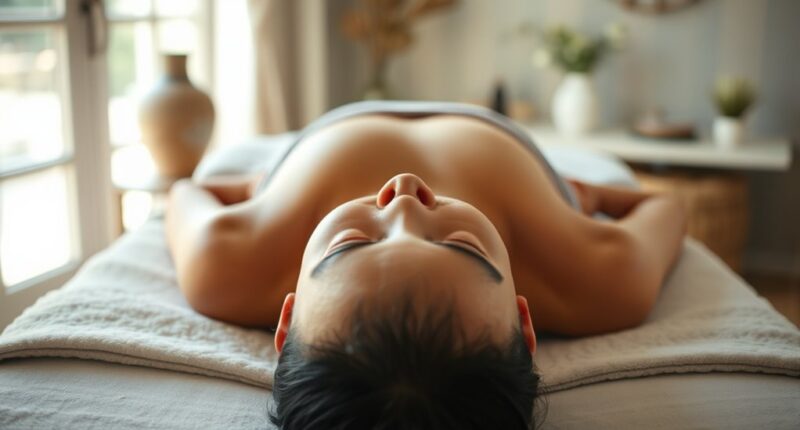Many myths surround breathing during massage, like the idea that deep breaths are always better or that faster breathing reduces stress. You might think holding your breath is harmful, or that breathing patterns don’t change when you relax. Some believe only nose breathing matters or that breathing exercises cure everything. In reality, breathing naturally shifts during massage, supporting relaxation and healing. If you want to uncover the truth behind these misconceptions, keep exploring these facts.
Key Takeaways
- Deep breathing during massage isn’t always beneficial; natural, effortless breaths support relaxation better than forcing deep inhalations.
- Breathing patterns naturally change during massage, often slowing and becoming more diaphragmatic, which promotes relaxation and healing.
- Many believe breathing remains unchanged during massage, but subtle shifts like deeper or slower breaths actually enhance stress relief.
- Relying solely on breathing techniques for health overlooks the importance of medical advice and lifestyle; breathing supports but doesn’t replace treatment.
- Breath-holding during massage is generally safe and doesn’t significantly impact oxygen levels, as the body maintains oxygen stability automatically.
Deep Breathing Is Always Better for Relaxation
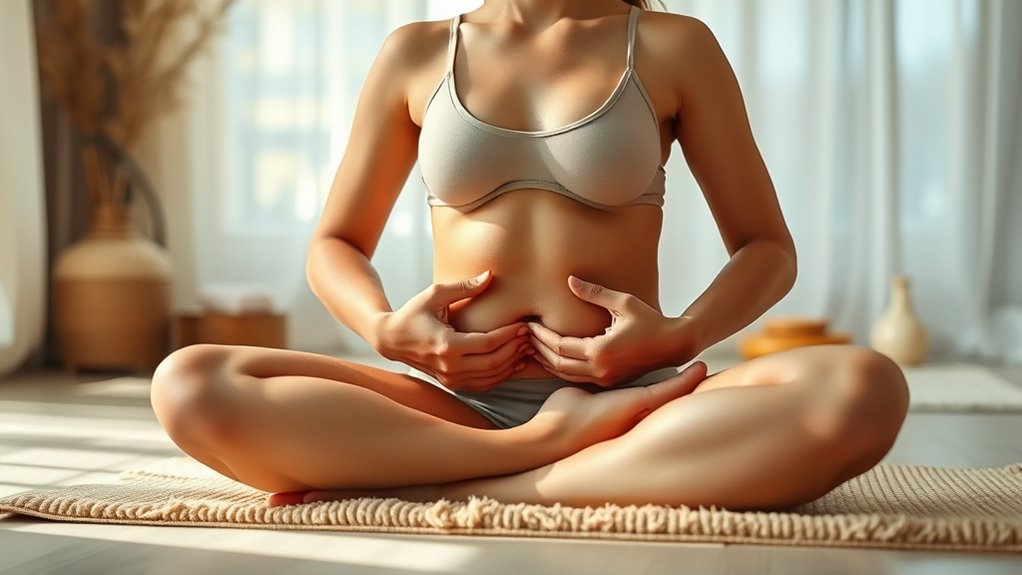
While deep breathing is often promoted as the ultimate relaxation technique, it’s not always the best choice for everyone or every situation. If you have respiratory health issues, forcing deep breaths can sometimes cause dizziness or discomfort. Focusing solely on deep breathing might also reduce your breathing efficiency if you overinflate your lungs or breathe too rapidly. Instead, paying attention to natural, effortless breaths can improve your overall respiratory health. Proper breathing involves a balance that supports oxygen intake without unnecessary strain. Remember, relaxing doesn’t always mean taking the deepest breaths; it means breathing comfortably and efficiently. By understanding your body’s needs, you can enhance your breathing efficiency and promote better relaxation without risking overexertion or discomfort. Additionally, awareness of breathing patterns can help you develop healthier habits tailored to your individual needs.
Faster Breathing Means More Stress Relief
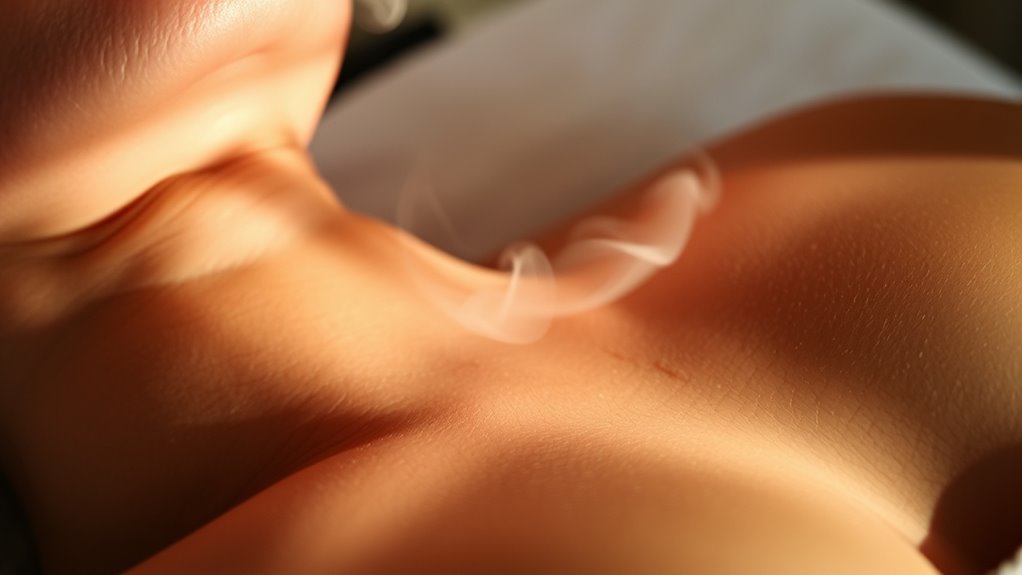
Many people assume that breathing faster will help them relax more quickly, but this isn’t always the case. Increasing your respiration rate doesn’t necessarily boost stress relief; it can actually do the opposite. Faster breathing often results in shallower breaths, reducing your breathing depth. Shallow breathing limits oxygen intake and can trigger your body’s stress response, making you feel more anxious. Instead of racing through breaths, focusing on slow, deep breaths promotes better relaxation. Deep breathing encourages your diaphragm to work fully, improving oxygen flow and signaling your nervous system to calm down. Additionally, practicing protective styling benefits through controlled breathing can help maintain your overall sense of well-being. So, while it might seem intuitive, faster breathing isn’t a shortcut to relaxation. Proper breathing involves controlled, deliberate breaths that enhance your overall sense of calm and well-being.
Breathing Techniques Can Cure All Ailments

Breathing techniques can substantially improve your mental and physical health, but they aren’t a cure-all for every ailment. While they support respiratory health and can reduce stress, they don’t eliminate underlying health issues or replace medical treatment. Breathing psychology shows that controlled breathing helps manage anxiety, improve focus, and boost relaxation, but it’s not a guaranteed remedy for chronic conditions or severe illnesses. Relying solely on breathing exercises to cure everything can lead to overlooked symptoms and delayed care. Instead, use these techniques as complementary tools to support overall well-being. Remember, good respiratory health depends on a combination of proper breathing, medical advice, and lifestyle choices—not just breathing exercises alone. Additionally, understanding the role of various factors in respiratory health can help in developing a balanced approach to wellness.
Holding Your Breath During Massage Is Harmful
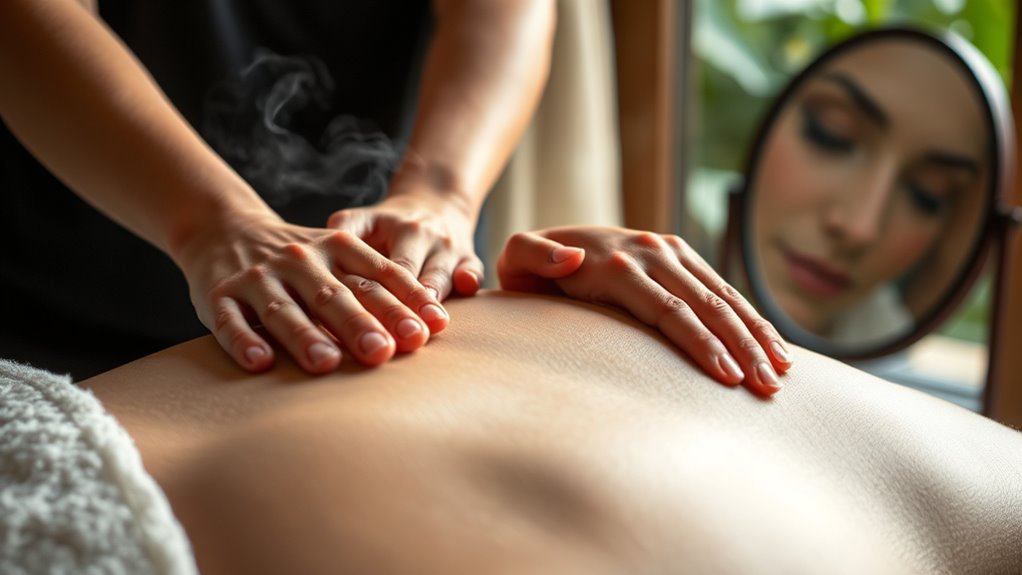
Many people worry that holding their breath during a massage is harmful, but your oxygen levels usually stay stable. Breath holds are common and often unnoticeable, so they rarely disrupt your relaxation. Understanding this can help you feel more comfortable and focus on enjoying your massage. Additionally, automation’s role in business intelligence helps ensure that your body’s responses are monitored accurately, reinforcing that holding your breath during massage is generally safe.
Oxygen Levels Remain Stable
Holding your breath during a massage doesn’t cause your oxygen levels to drop substantially. Your body naturally maintains oxygen stability through unconscious processes, ensuring your breathing remains in equilibrium. Even if you momentarily hold your breath, your body compensates quickly, so your oxygen levels stay steady. Additionally, the materials involved in breathing regulation are designed to adapt rapidly to such brief changes. Here’s a quick comparison:
| Effect of Holding Breath | Body’s Response |
|---|---|
| Slight oxygen drop | Increased carbon dioxide levels |
| Triggered breathing | Restores breathing equilibrium |
| No risk of hypoxia | Body adapts instantly |
| Short holds safe | Long holds may cause discomfort |
| Natural regulation | Maintains oxygen stability |
Rest assured, brief breath holds during massage are typically harmless. Your body is equipped to keep oxygen levels stable.
Breath Holds Are Common
Although it’s common to hold your breath during a massage, doing so isn’t harmful in most cases. Many people unconsciously pause their breathing, but this doesn’t negatively impact your respiratory health. In fact, breath holds are quite normal and often stem from relaxation or focusing on the massage.
Here are a few points to contemplate:
- Breath holding often happens naturally, especially during deep relaxation or breathing exercises.
- Your body automatically adjusts to maintain oxygen levels, so brief breath holds usually aren’t a concern.
- If you’re concerned about respiratory health, focus on steady, relaxed breathing rather than trying to control every breath during your massage.
- Breathing mechanisms are designed to ensure your body maintains proper oxygen and carbon dioxide levels even during unconscious breath holds.
Relaxation Not Disrupted
While it might feel like holding your breath during a massage could disrupt your relaxation, it generally doesn’t cause any harm. Your body naturally maintains breathing awareness, so even if you momentarily hold your breath, it’s unlikely to interfere with relaxation. Practicing mindful breathing during a massage can help enhance your experience, making you more aware of your breath and promoting calm. If you find yourself holding your breath unconsciously, gently redirect your focus to your breathing, allowing it to flow naturally. Remember, your body is resilient, and brief breath holds won’t undo the benefits of massage or relaxation. Focus on breathing slowly and intentionally, and you’ll deepen your sense of calm without disrupting the soothing effects of your session.
Breathing Exercises Are Only for Meditation Practitioners
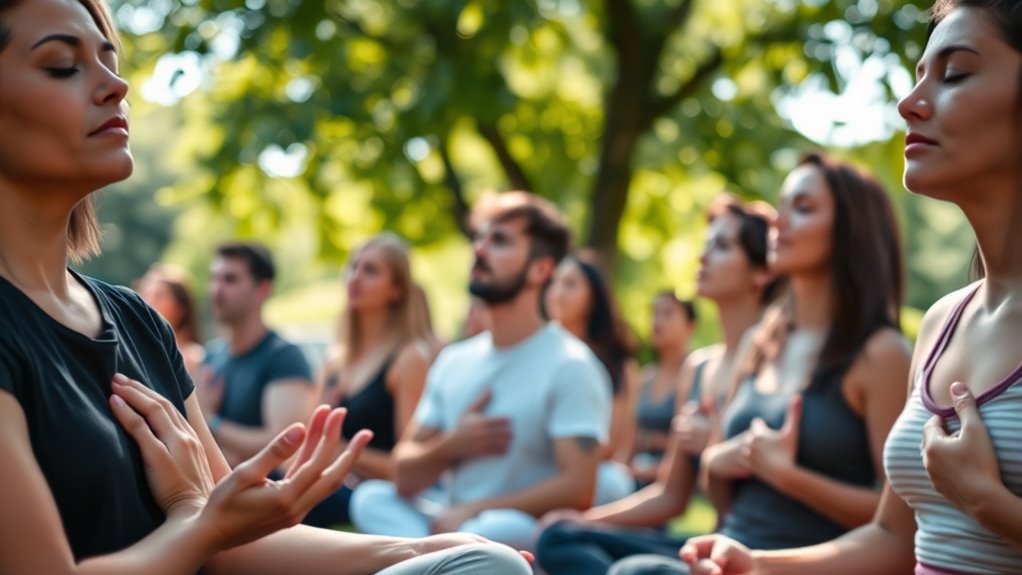
Many people mistakenly believe that breathing exercises are only useful for meditation practitioners, but in reality, they benefit everyone. Whether you’re aiming to improve focus, reduce stress, or boost athletic performance, breathing techniques are valuable tools.
- Enhance mindfulness meditation: Proper breathing helps deepen your practice and increases awareness throughout the day.
- Improve athletic performance: Controlled breathing increases oxygen flow, stamina, and endurance during workouts.
- Reduce stress and anxiety: Simple breathing exercises can calm your nervous system, regardless of your activity level.
You don’t need to be a meditation expert to reap these benefits. Incorporating breathing exercises into your routine can positively impact many aspects of your life, beyond just meditation.
Shallow Breathing Is Less Effective Than Deep Breathing
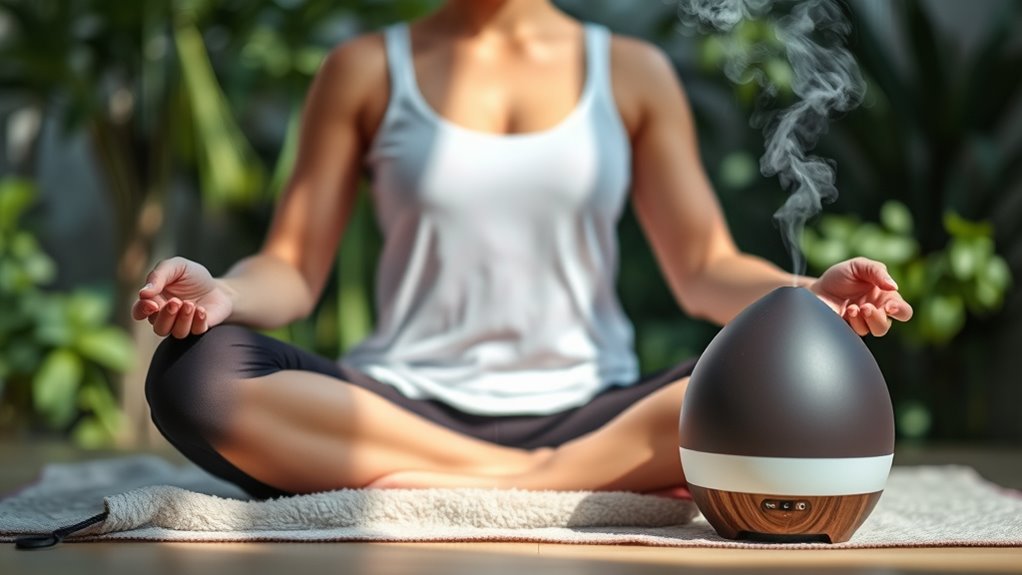
Deep breathing is considerably more effective than shallow breathing because it allows your lungs to fully expand and maximize oxygen intake. When you breathe deeply, you improve your respiratory efficiency, ensuring your body gets the oxygen it needs for ideal function. Shallow breathing limits lung capacity, restricting airflow and reducing oxygen delivery to your tissues. Over time, shallow breaths can lead to decreased lung flexibility and lower overall respiratory health. Deep breaths engage your diaphragm and expand your chest, increasing oxygen exchange and strengthening your lungs. This not only enhances your breathing efficiency but also supports better relaxation and stress reduction. By focusing on deep breathing, you make the most of your lung capacity, improving endurance, clarity, and overall well-being. Incorporating top mattress toppers and practicing mindful breathing techniques can further enhance your respiratory health and comfort.
You Should Always Breathe Through Your Nose
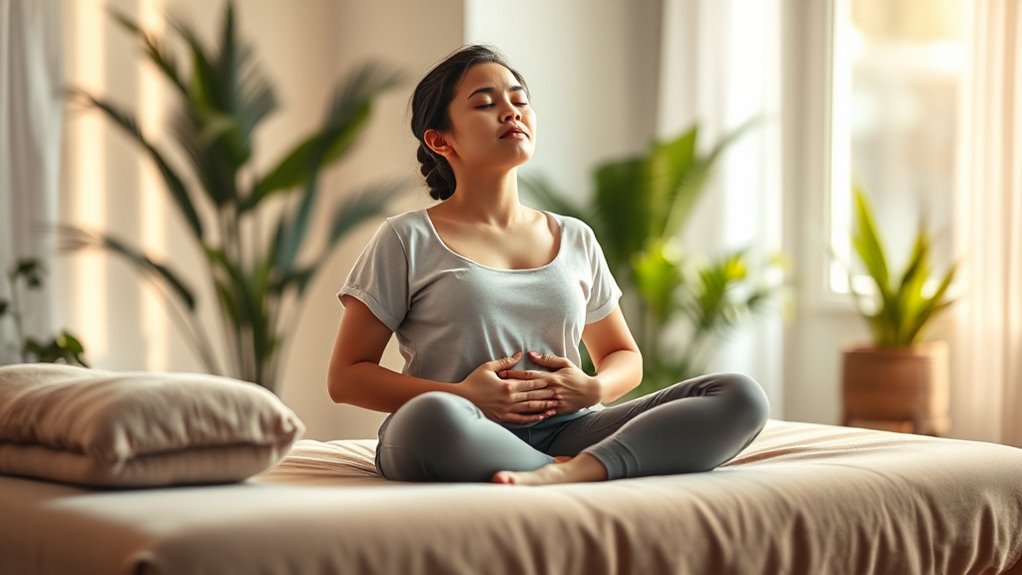
Breathing through your nose offers many benefits, like filtering air and improving oxygen intake. While it’s often recommended, there are times when mouth breathing is necessary or unavoidable. Some myths suggest you should always breathe through your nose, but understanding the facts helps you make the best choice for your health.
Nasal Breathing Benefits
Since your nose acts as a natural filter and humidifier, breathing through it offers significant health benefits. When you breathe through your nasal passages, you improve oxygen intake and support overall wellness. Additionally, nasal breathing can reduce the risk of respiratory infections by preventing bacterial buildup, thanks to the filtering properties of the nasal hairs and mucous membranes.
Myth of Mouth Breathing
While nasal breathing offers many health advantages, there’s a common misconception that you should always breathe through your nose. In reality, mouth breathing isn’t always harmful or unnecessary. Sometimes, your nasal passages may be blocked or congested, making mouth breathing the only option for adequate airflow. During intense exercise or when you have allergies, breathing through your mouth can help you meet your oxygen needs more efficiently. It’s important to understand that both mouth and nasal breathing serve specific purposes. Relying solely on nasal passages isn’t always practical or healthy, especially if nasal congestion prevents proper airflow. The key is to breathe through your nose when possible, but don’t stress if mouth breathing occurs temporarily—it’s a natural response to certain situations. Silly tantrums during family photoshoots, for example, can cause unexpected breathing patterns or reactions.
Breathing Patterns Don’t Change During Massage
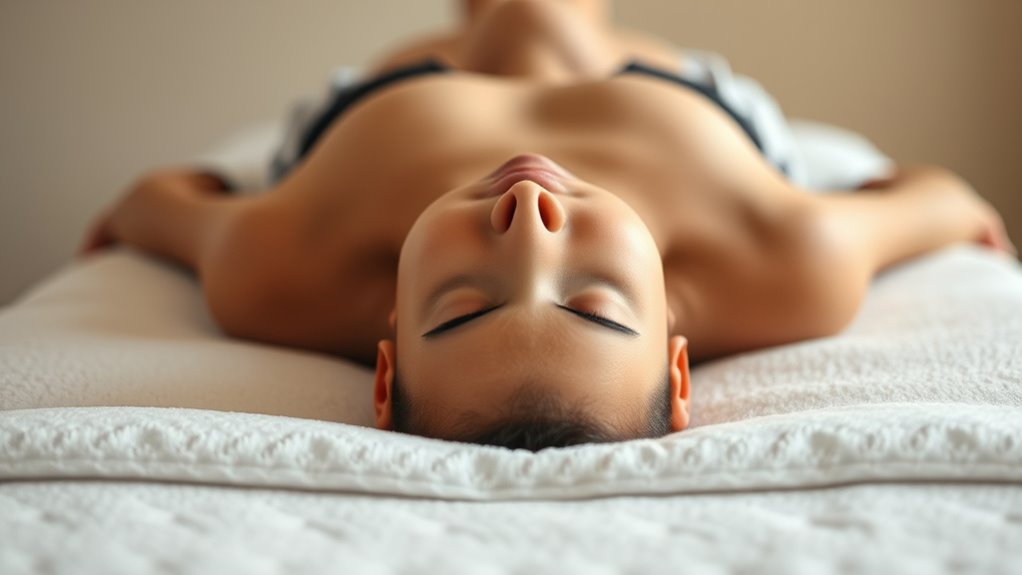
Many people assume that your breathing pattern remains unchanged during a massage, but that’s not entirely accurate. As you experience techniques evolution, your breathing can subtly shift. These changes often happen naturally to promote relaxation and better circulation. To understand this, consider:
- Your breathing may become deeper or more diaphragmatic as you relax.
- Breathing consistency can fluctuate, especially if your body responds to specific massage techniques.
- Your rhythm of breath might slow down, aiding in stress relief and muscle release.
- The autonomic nervous system can influence breathing patterns during massage, adjusting your body’s responses to stress and relaxation.
These variations highlight that breathing isn’t static during a massage. Instead, it adapts to your body’s needs, supporting healing and relaxation. Recognizing this can help you appreciate how your breathing subtly responds without you consciously controlling it.
Breathing Is Not Important During Massage Sessions
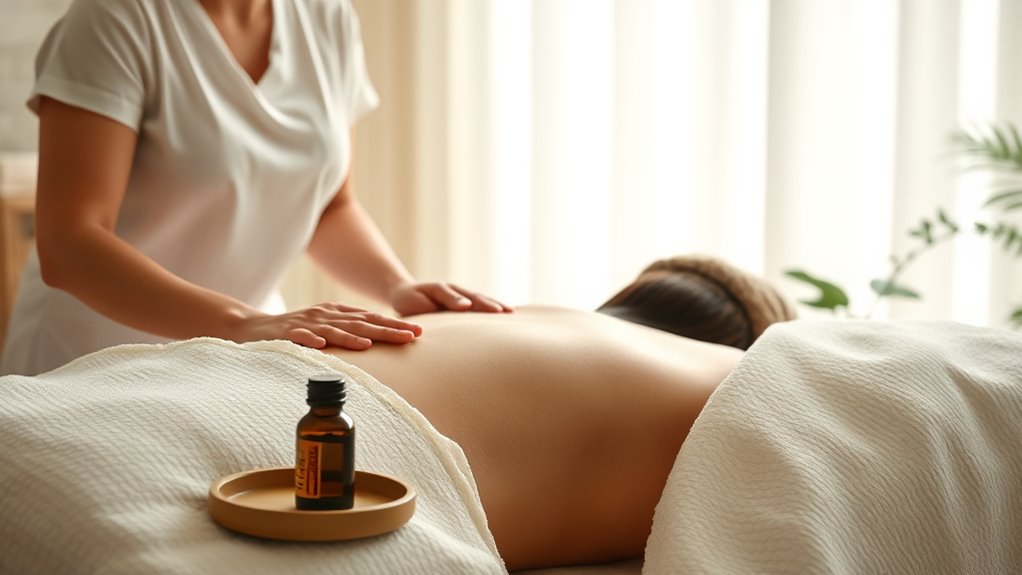
Some people believe that breathing isn’t a vital part of a massage, but that’s a misconception. Your breath plays a crucial role in relaxation and healing. During a massage, practicing mindful breathing and breath awareness can deepen your sense of calm and help release tension. When you focus on slow, intentional breaths, you activate your body’s relaxation response, making the massage more effective. It’s easy to forget to breathe deeply or stay mindful of your breath, but consciously doing so enhances your experience. Even if your breathing seems automatic, paying attention to it can improve your overall comfort and promote a deeper connection with the massage. Remember, your breath isn’t just passive—it’s a powerful tool for relaxation during your session.
Frequently Asked Questions
Can Breathing Techniques Improve Athletic Performance?
Yes, breathing techniques can improve your athletic performance. By practicing breath control, you optimize oxygen intake, which helps your muscles function more efficiently and delays fatigue. When you focus on deep, controlled breaths, you enhance endurance and recovery. Incorporating these techniques into your training allows you to stay calmer under pressure, boost stamina, and perform at your best. So, yes, mastering your breath can make a noticeable difference in your athletic results.
Is It Necessary to Breathe a Certain Way During Massage?
You don’t need to follow a specific breathing pattern during massage, but focusing on deep, relaxed breaths can enhance your relaxation. Using relaxation techniques like slow, even breathing helps you stay calm and maximize the massage’s benefits. Just breathe naturally and comfortably, allowing your body to relax fully. The goal is to create a calming environment where your breathing supports your overall sense of well-being during the session.
How Does Breathing Affect Muscle Recovery?
Breathing directly impacts muscle recovery by increasing oxygen flow to your muscles, which helps repair tissues and reduces soreness. When you focus on diaphragm engagement, you enhance oxygen intake and promote relaxation. Deep, controlled breaths during massage support faster recovery, decrease tension, and improve circulation. So, paying attention to your breathing not only relaxes you but also speeds up your muscles’ healing process, making your recovery more effective.
Are There Specific Breathing Patterns for Different Massage Styles?
Yes, different massage styles often incorporate specific breathing patterns. For example, relaxation techniques emphasize slow, deep breaths and breathing control to enhance calmness and reduce tension. In contrast, more vigorous massage styles might encourage shorter, more forceful breaths to energize the body. By adjusting your breathing patterns to match the massage style, you can deepen relaxation or boost stimulation, making your experience more effective and enjoyable.
Can Improper Breathing Cause Long-Term Health Issues?
Ignoring proper breathing is like leaving your engine idling—eventually, it causes damage. Improper breathing can lead to long-term health issues, especially if you skip breathing exercises or oxygen therapy that help improve your lung capacity. Over time, poor breathing habits strain your respiratory system and reduce oxygen flow, making you more prone to fatigue and illness. Prioritize conscious breathing to keep your health running smoothly for the long haul.
Conclusion
Don’t let misconceptions hold you back from improving your breathing during massage. Whether you think deep breaths are always better or that holding your breath is harmful, the truth is simple: breathe naturally and comfortably. Picture yourself relaxing, inhaling through your nose, and exhaling slowly—your body responds positively. By understanding these facts, you’ll get the most out of your massage, feeling more relaxed and rejuvenated without overthinking every breath.
